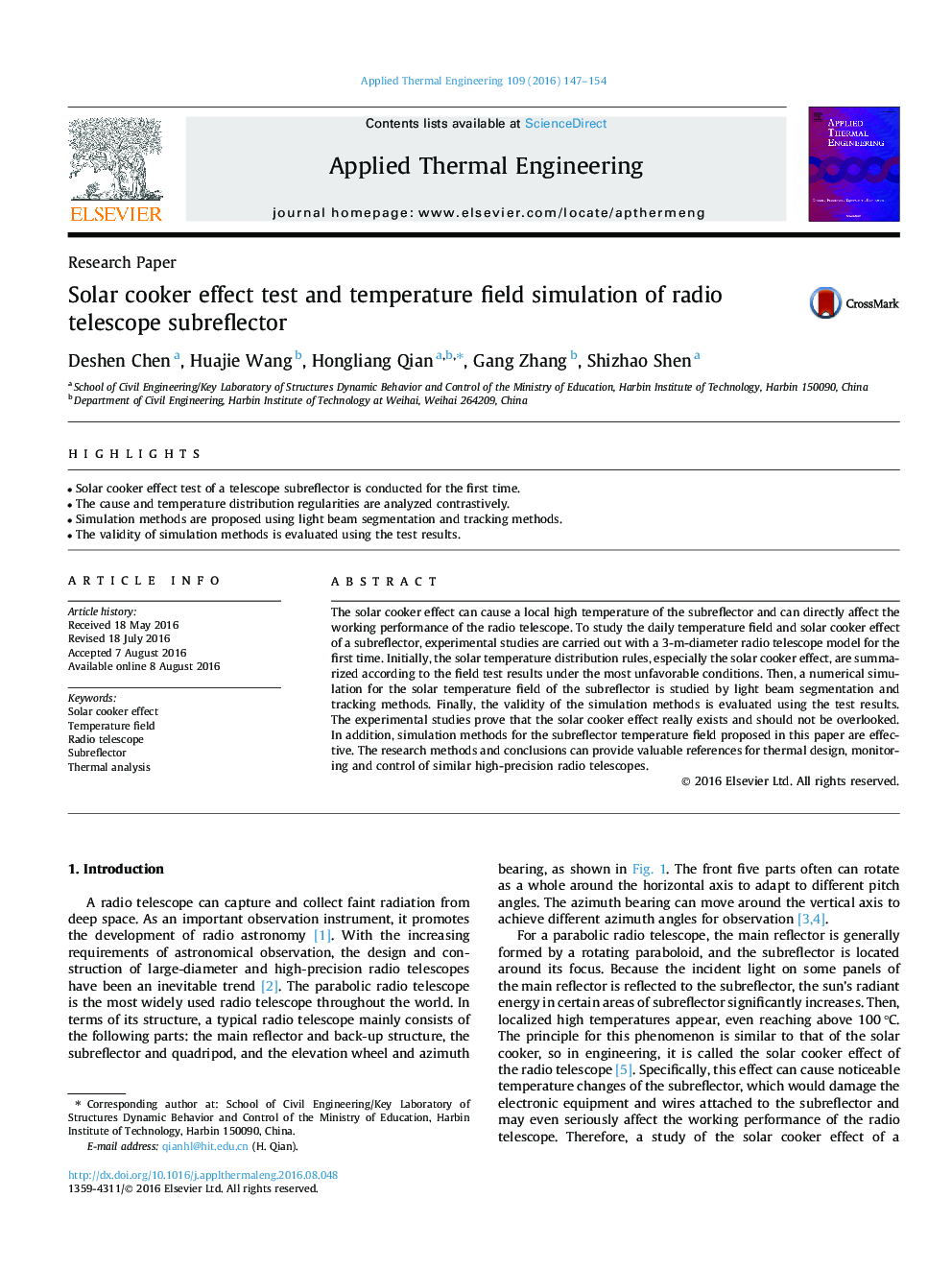| Article ID | Journal | Published Year | Pages | File Type |
|---|---|---|---|---|
| 644451 | Applied Thermal Engineering | 2016 | 8 Pages |
•Solar cooker effect test of a telescope subreflector is conducted for the first time.•The cause and temperature distribution regularities are analyzed contrastively.•Simulation methods are proposed using light beam segmentation and tracking methods.•The validity of simulation methods is evaluated using the test results.
The solar cooker effect can cause a local high temperature of the subreflector and can directly affect the working performance of the radio telescope. To study the daily temperature field and solar cooker effect of a subreflector, experimental studies are carried out with a 3-m-diameter radio telescope model for the first time. Initially, the solar temperature distribution rules, especially the solar cooker effect, are summarized according to the field test results under the most unfavorable conditions. Then, a numerical simulation for the solar temperature field of the subreflector is studied by light beam segmentation and tracking methods. Finally, the validity of the simulation methods is evaluated using the test results. The experimental studies prove that the solar cooker effect really exists and should not be overlooked. In addition, simulation methods for the subreflector temperature field proposed in this paper are effective. The research methods and conclusions can provide valuable references for thermal design, monitoring and control of similar high-precision radio telescopes.
